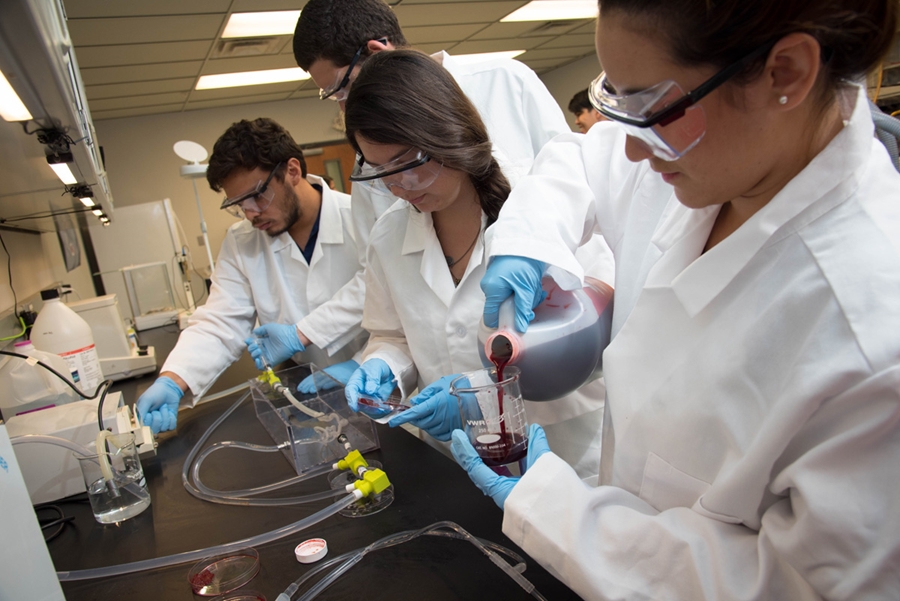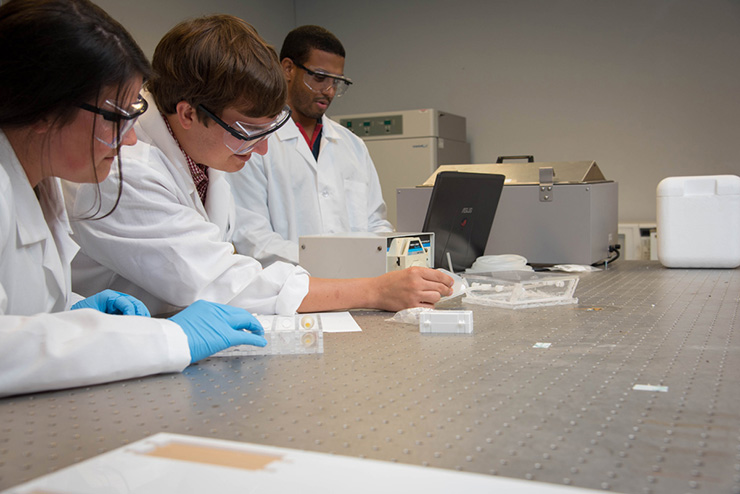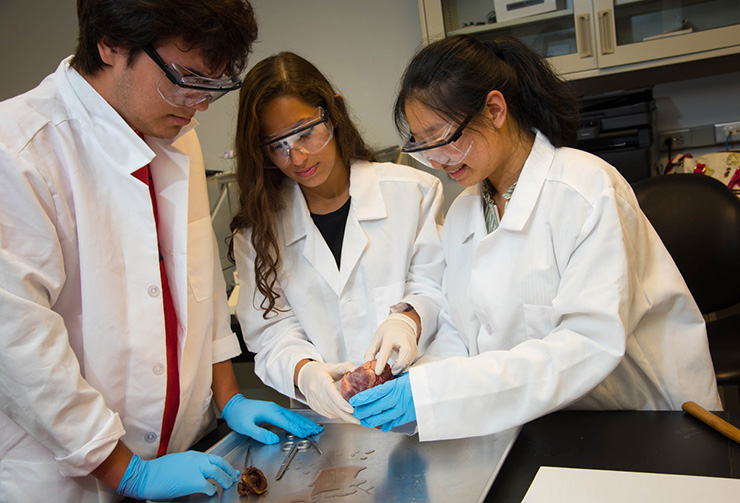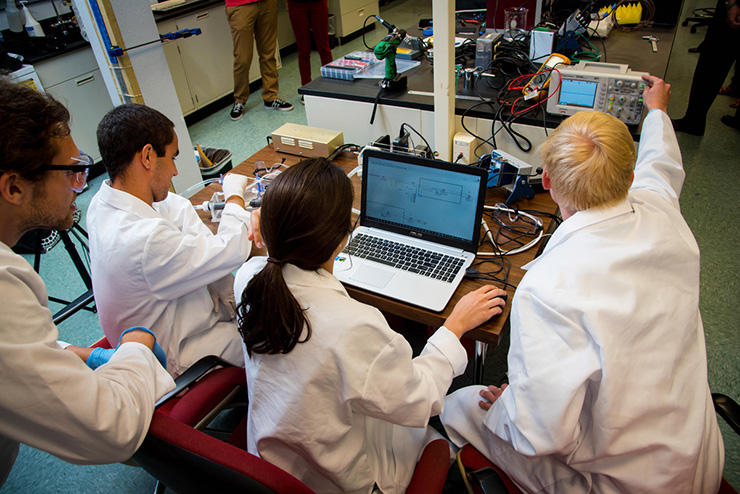
This summer, the biomedical engineering labs of Hanna Jensen, research assistant professor, and Morten Jensen, associate professor, have been busy. Nine Brazilian students have spent the past 10 weeks helping the professors to conduct research in four specific areas: strokes, heart attacks, as well as venous and mitral valves.
These student researchers are part of the Summer Research Internship program, which has enabled over 70 students to stay on the University of Arkansas campus for ten weeks this summer while working with University faculty. Of the visiting students, 56 are working with engineering faculty members, while 15 are working in exercise science, food science, supply chain, management and physics.
For the students who worked with the Jensens, the chance to do first-hand research was a major inducement to apply to the Summer Research Internship program. Jéssica Belisário, who helped to design and build a functional blood vessel simulator over the course of her summer here, stated, "As a biomedical engineering sophomore, I had never worked in research before...when the opportunity of working with it appeared, I grabbed it."
|
Heart attack team members Anna Brickell, Curran Henson and Vinicius Sardinha. |
What students learned quickly after arriving, however, was that research often encompasses much more than spending time in the lab. As Matheus Fernandes, one of Belisário's teammates, explained, "Something that I...didn't know before [is] that a big part of the research is to send emails and phone calls to multiple companies and professors for a oddly long period of time to try start the project." What's more, he noted, "Sometimes one day in the library saves a month in the lab." Another key part of their research is working with non-internship students, including graduate and undergraduate students from the U of A, as well as students visiting from other universities.
A second lesson the students soon realized was that if they wanted to see substantive results after ten weeks of lab research, they needed to work hard. "The limited timeframe," Hanna Jensen explained, "pushes them to accomplish more." She added that students have to constantly be motivated, independent, and capable of taking initiative on their projects. Thankfully, Jensen noted, the current students have demonstrated those qualities, and as a result can be proud of what they've accomplished this summer. "I really enjoyed working with them," she concluded, "They haven't been complacent."
|
Mitral valve team members Mariana Maisonnette, Dylan Guimaraes, and Tiffany Lin. |
In discussing the success of the program, the Jensens also pointed to the fact that they selected students from a wide range of backgrounds as opposed to just biomedical engineering. Explained Hanna Jensen, "We are trying to solve problems in the human body that are so complex it would be unrealistic to expect one field of expertise to serve." She likened the field of biomedical engineering to the head of an octopus, which requires tentacles in many different disciplines, ranging from medicine to biology to chemistry to mechanical engineering. Morten Jensen continued, "Students are exposed to this type of work and say, 'Is it really possible a mechanical engineer can come to a graduate degree in BME?' We tell them: of course!"
Often, their experiences during this summer indeed inspire the students to return to the U of A as graduate students. When discussing what she learned from her summer research, for instance, mitral valve team member Mariana Maisonnette said, "It showed me [that biomedical engineering] really is something I enjoy doing and would love to work with in the future. I admire Dr. Jensen a lot and hope to not only work with him again in the future, but also, perhaps, do graduate school here."
|
Venous valve team members Garrett Easson, Bruno DaSilva, Juliana Bento, and Mads Andresen. |
"These activities demonstrate the significant impact our faculty are having on promoting research experiences for students not just in Arkansas, but from different parts of the world. Through these programs, we strive to provide students with opportunities that help them understand the importance of collaboration and to also realize the real impact that biomedical engineering can have on the lives of people in different parts of the world," said Raj Rao, professor and head of the Department of Biomedical Engineering.
For those interested in learning more about the work done by the Summer Research Institute students, their research posters will be presented from 1-2:30 p.m. Friday, Aug. 5, at the Arkansas Union.
Topics
Contacts
Elizabeth DeMeo, media specialist
Biomedical Engineering
479-575-4667, eademeo@uark.edu


